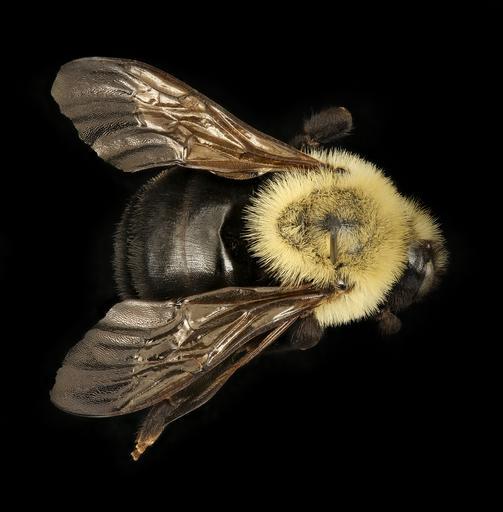MAKE A MEME
View Large Image

| View Original: | Bombus_citrinus,_f,_back,_Talbot_Co,_MD_2016-01-07-11.08.jpg (3632x3696) | |||
| Download: | Original | Medium | Small | Thumb |
| Courtesy of: | www.flickr.com | More Like This | ||
| Keywords: bee bees bombus bombus cirinus bombuscirinus taxonomy: binomial = bombus citrinus taxonomybinomialbombuscitrinus hymenoptera apoidea apide parasite this cleptoparasite united states geological survey unitedstatesgeologicalsurvey patuxent wildlife research center patuxentwildliferesearchcenter zerene stacker zerenestacker stackshot droege ashleigh jacobs ashleighjacobs talbot county talbotcounty maryland bioblitz pickering creek audubon center pickeringcreekauduboncenter black background blackbackground dofstacking animal photo border monochrome macro surreal texture Not all bumblebees gather pollen. Some, like this Bombus citrinus, take over the nests of other bumblebee species and use their workers to provision the nests of their young. This is the most common Eastern species of parasitic bumblebee, and it is actually often difficult to find these days… Something we are watching to see if there might be issues with the species decline. This one was collected in Talbot County Maryland at the BioBlitz at Pickering Creek, run by the Audubon Society. Photographs by Ashleigh Jacobs. ~~~~~~~~~~{{{{{{0}}}}}}~~~~~~~~~~ All photographs are public domain, feel free to download and use as you wish. Photography Information: Canon Mark II 5D, Zerene Stacker, Stackshot Sled, 65mm Canon MP-E 1-5X macro lens, Twin Macro Flash in Styrofoam Cooler, F5.0, ISO 100, Shutter Speed 200 Beauty is truth, truth beauty - that is all Ye know on earth and all ye need to know " Ode on a Grecian Urn" John Keats You can also follow us on Instagram account USGSBIML Want some Useful Links to the Techniques We Use? Well now here you go Citizen: Art Photo Book: Bees: An Up-Close Look at Pollinators Around the World www.qbookshop.com/products/216627/9780760347386/Bees.html... Basic USGSBIML set up: www.youtube.com/watch?v=S-_yvIsucOY USGSBIML Photoshopping Technique: Note that we now have added using the burn tool at 50% opacity set to shadows to clean up the halos that bleed into the black background from "hot" color sections of the picture. www.youtube.com/watch?v=Bdmx_8zqvN4 PDF of Basic USGSBIML Photography Set Up: ftp://ftpext.usgs.gov/pub/er/md/laurel/Droege/How%20to%20Take%20MacroPhotographs%20of%20Insects%20BIML%20Lab2.pdf Google Hangout Demonstration of Techniques: plus.google.com/events/c5569losvskrv2nu606ltof8odo or www.youtube.com/watch?v=4c15neFttoU Excellent Technical Form on Stacking: www.photomacrography.net/ Contact information: Sam Droege sdroege@usgs.gov 301 497 5840 Not all bumblebees gather pollen. Some, like this Bombus citrinus, take over the nests of other bumblebee species and use their workers to provision the nests of their young. This is the most common Eastern species of parasitic bumblebee, and it is actually often difficult to find these days… Something we are watching to see if there might be issues with the species decline. This one was collected in Talbot County Maryland at the BioBlitz at Pickering Creek, run by the Audubon Society. Photographs by Ashleigh Jacobs. ~~~~~~~~~~{{{{{{0}}}}}}~~~~~~~~~~ All photographs are public domain, feel free to download and use as you wish. Photography Information: Canon Mark II 5D, Zerene Stacker, Stackshot Sled, 65mm Canon MP-E 1-5X macro lens, Twin Macro Flash in Styrofoam Cooler, F5.0, ISO 100, Shutter Speed 200 Beauty is truth, truth beauty - that is all Ye know on earth and all ye need to know " Ode on a Grecian Urn" John Keats You can also follow us on Instagram account USGSBIML Want some Useful Links to the Techniques We Use? Well now here you go Citizen: Art Photo Book: Bees: An Up-Close Look at Pollinators Around the World www.qbookshop.com/products/216627/9780760347386/Bees.html... Basic USGSBIML set up: www.youtube.com/watch?v=S-_yvIsucOY USGSBIML Photoshopping Technique: Note that we now have added using the burn tool at 50% opacity set to shadows to clean up the halos that bleed into the black background from "hot" color sections of the picture. www.youtube.com/watch?v=Bdmx_8zqvN4 PDF of Basic USGSBIML Photography Set Up: ftp://ftpext.usgs.gov/pub/er/md/laurel/Droege/How%20to%20Take%20MacroPhotographs%20of%20Insects%20BIML%20Lab2.pdf Google Hangout Demonstration of Techniques: plus.google.com/events/c5569losvskrv2nu606ltof8odo or www.youtube.com/watch?v=4c15neFttoU Excellent Technical Form on Stacking: www.photomacrography.net/ Contact information: Sam Droege sdroege@usgs.gov 301 497 5840 | ||||